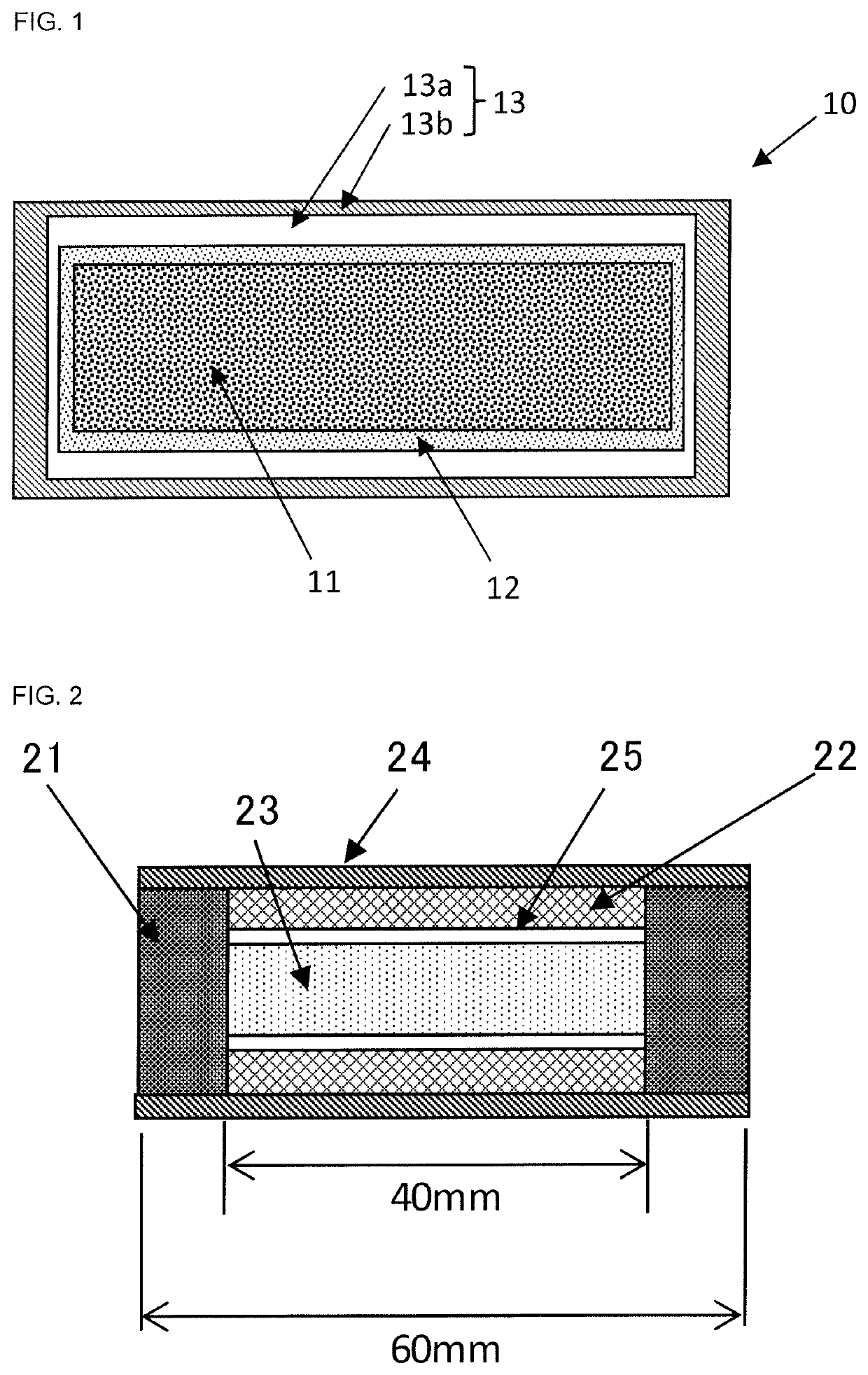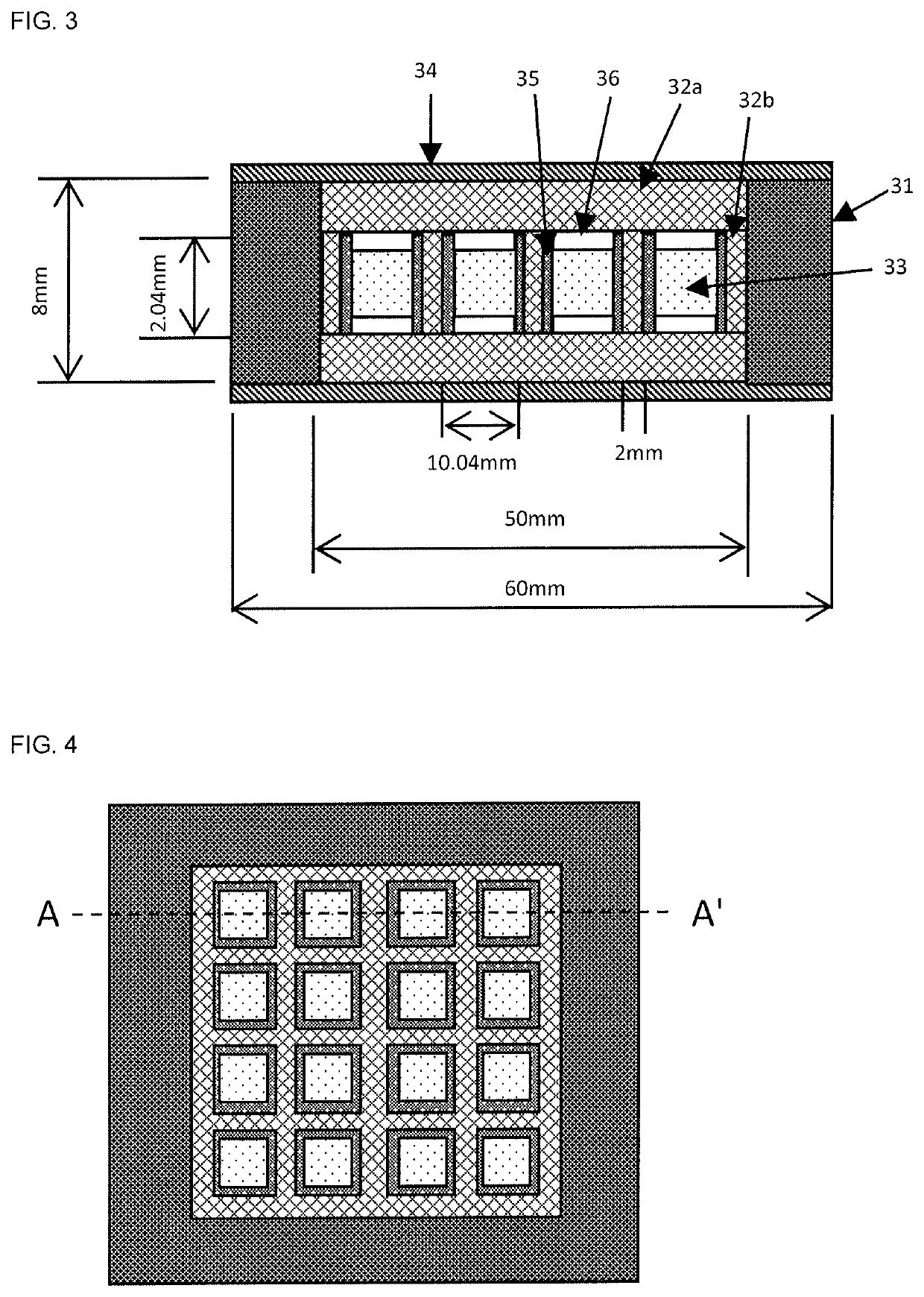Aluminum-diamond-based composite and heat dissipation component
a technology of aluminum-diamond-based composites and heat dissipation components, which is applied in the direction of semiconductor devices, solid-state devices, semiconductor/solid-state device details, etc., can solve the problems of thermal expansion mismatch between the semiconductor element and the heat sink used for heat dissipation, the size of individual semiconductor elements has been increased with an increase in output power, and the heat dissipation demand has become increasingly more challenging. , to achieve the effect o
- Summary
- Abstract
- Description
- Claims
- Application Information
AI Technical Summary
Benefits of technology
Problems solved by technology
Method used
Image
Examples
examples
[0085]Hereinafter, the present invention will be described in more detail with reference to Examples and Comparative Examples, but the present invention is not limited thereto.
examples 1 to 13
, Comparative Examples 1 to 4
[0086]Commercially available high purity diamond powder A (available from Diamond Innovation Co., Ltd.) and high purity diamond powder B (available from Diamond Innovation Co., Ltd.), each having an average particle size (which refers to a median diameter D50 on volume basis) as shown in Table 1, were mixed at a mass ratio A:B=7:3. The measurement of the particle size distribution of the mixed powder of the diamond powder A and the diamond powder B on volume basis indicated a bimodal frequency distribution of the particle size having a first highest peak and a second highest peak at positions corresponding to the average particle diameters of the respective powders. Further, a ratio of an area of a particle diameter of from 1 to 35 μm to an area of a particle diameter of from 45 to 205 μm in the frequency distribution of the particle size was 3:7. The measurement of the particle size distribution was carried out by adding each diamond powder to pure wate...
examples 14 to 19
, Comparative Examples 5 to 7
[0104]Aluminum-diamond-based composites were produced by the same method as that of Example 1, with the exception that in the step of forming the surface layer on the side surfaces, the pure aluminum foil having the thickness shown in Table 3 was wrapped around the outer periphery once to form a pure aluminum layer, and the overall surface was ground by a surface grinding machine such that “Processing Thickness of Each Surface” shown in Table 3 was obtained. Table 3 shows a thickness (which is nearly equal to a thickness of the surface layer) of each pure aluminum foil on both main surfaces and side surfaces after grinding, a processing thickness, and a dimensional error, flatness and parallelism determined by the same method as that of Example 1.
[0105]
TABLE 3ProcessingPure AluminumThickness ofDimensionalFoil ThicknessEach SurfaceErrorFlatnessParallelism(μm)(μm)(mm)(mm)(mm)Example 146030±0.0090.0050.005Example 155010±0.0200.0040.01Example 164010±0.0170.0...
PUM
| Property | Measurement | Unit |
|---|---|---|
| thickness | aaaaa | aaaaa |
| particle diameter | aaaaa | aaaaa |
| particle size | aaaaa | aaaaa |
Abstract
Description
Claims
Application Information
 Login to View More
Login to View More - Generate Ideas
- Intellectual Property
- Life Sciences
- Materials
- Tech Scout
- Unparalleled Data Quality
- Higher Quality Content
- 60% Fewer Hallucinations
Browse by: Latest US Patents, China's latest patents, Technical Efficacy Thesaurus, Application Domain, Technology Topic, Popular Technical Reports.
© 2025 PatSnap. All rights reserved.Legal|Privacy policy|Modern Slavery Act Transparency Statement|Sitemap|About US| Contact US: help@patsnap.com


